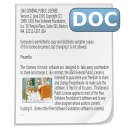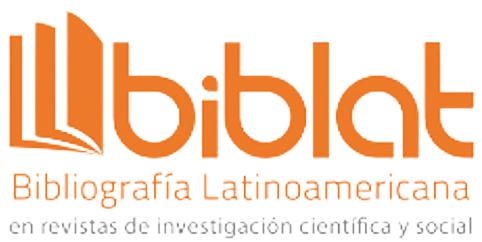Design Thinking applied to User Experience Design
Abstract
Today we are immersed in technology and the way in which we communicate with this is the user interface, to enable the interaction between the user and an artifact, system or machine, so large companies use Design Thinking techniques and Design of user interfaces, to get closer to customers empathically, so that they can know their real needs and be really interested in the details of their lives. Generating empathy with our customers means putting their problems, more than our solutions, first. The problem that is sought to be solved in the user experience design part, is that the designer does not know if the user will find the proposed interface friendly, that is why Design Thinking is one of the most used methods in order to put yourself in the position of the end user. In this article we intend to show how Design Thinking can be applied to the generation of UX user experiences. Each of the phases involved in the generation of the user experience is also explained: Research, Organization, Prototyping, Testing and Design.
Downloads
References
J. Gothelf, J. Seiden, and E. Ries, Lean UX: cómo aplicar los principios Lean a la mejora de la experiencia de usuario. Universidad Internacional de La Rioja, 2014.
M. Piasecki and K. Piezka, “Conceptual methodology of developing the user interface,” Institute of Applied Informatics, Wroc law University of Technology, 2006.
G. N. Nedeltcheva and E. Shoikova, “Coupling design thinking, user experience design and agile: towards cooperation framework,” in Proceedings of the International Conference on Big Data and Internet of Thing, 2017, pp. 225–229. DOI: https://doi.org/10.1145/3175684.3175711
R. Villarroel, H. Spencer, and R. Muñoz, “Aplicación de design thinking de manera interdisciplinaria en la asignatura de ingeniería de software,” in Memorias XXX Congreso SOCHEDI, 2017, pp. 1–9.
J. Bentley, “Steps to a Good GUI,” 14.
H. Plattner, Guía del proceso creativo. Mini guía: una introducción al Design Thinking+ Bootcamp bootleg. 2018.
D. Dunne and R. Martin, “Design thinking and how it will change management education: An interview and discussion,” Academy of Management Learning & Education, vol. 5, no. 4, pp. 512–523, 2006. DOI: https://doi.org/10.5465/amle.2006.23473212
C. Labib, E. Hasanein, and O. Hegazy, “Early development of graphical user interface (GUI) in agile methodologies,” Journal of Computational Methods in Sciences and Engineering, vol. 9, no. s2, pp. S239–S249, 2009. DOI: https://doi.org/10.3233/JCM-2009-0251
L. Morales, “Structured user interface design methodology,” in CHI’01 extended abstracts on Human factors in computing systems, 2001, pp. 51–52. DOI: https://doi.org/10.1145/634067.634102
T. Brown and J. Wyatt, “Design thinking for social innovation,” Development Outreach, vol. 12, no. 1, pp. 29–43, 2010. DOI: https://doi.org/10.1596/1020-797X_12_1_29
Y. H. Montero, “Experiencia de usuario: principios y métodos,” Experiencia de Usuario: Principios y Métodos, vol. 9, 2015.
Copyright (c) 2021 Innovation and Software

This work is licensed under a Creative Commons Attribution 4.0 International License.
The authors exclusively grant the right to publish their article to the Innovation and Software Journal, which may formally edit or modify the approved text to comply with their own editorial standards and with universal grammatical standards, prior to publication; Likewise, our journal may translate the approved manuscripts into as many languages as it deems necessary and disseminates them in several countries, always giving public recognition to the author or authors of the research.
























